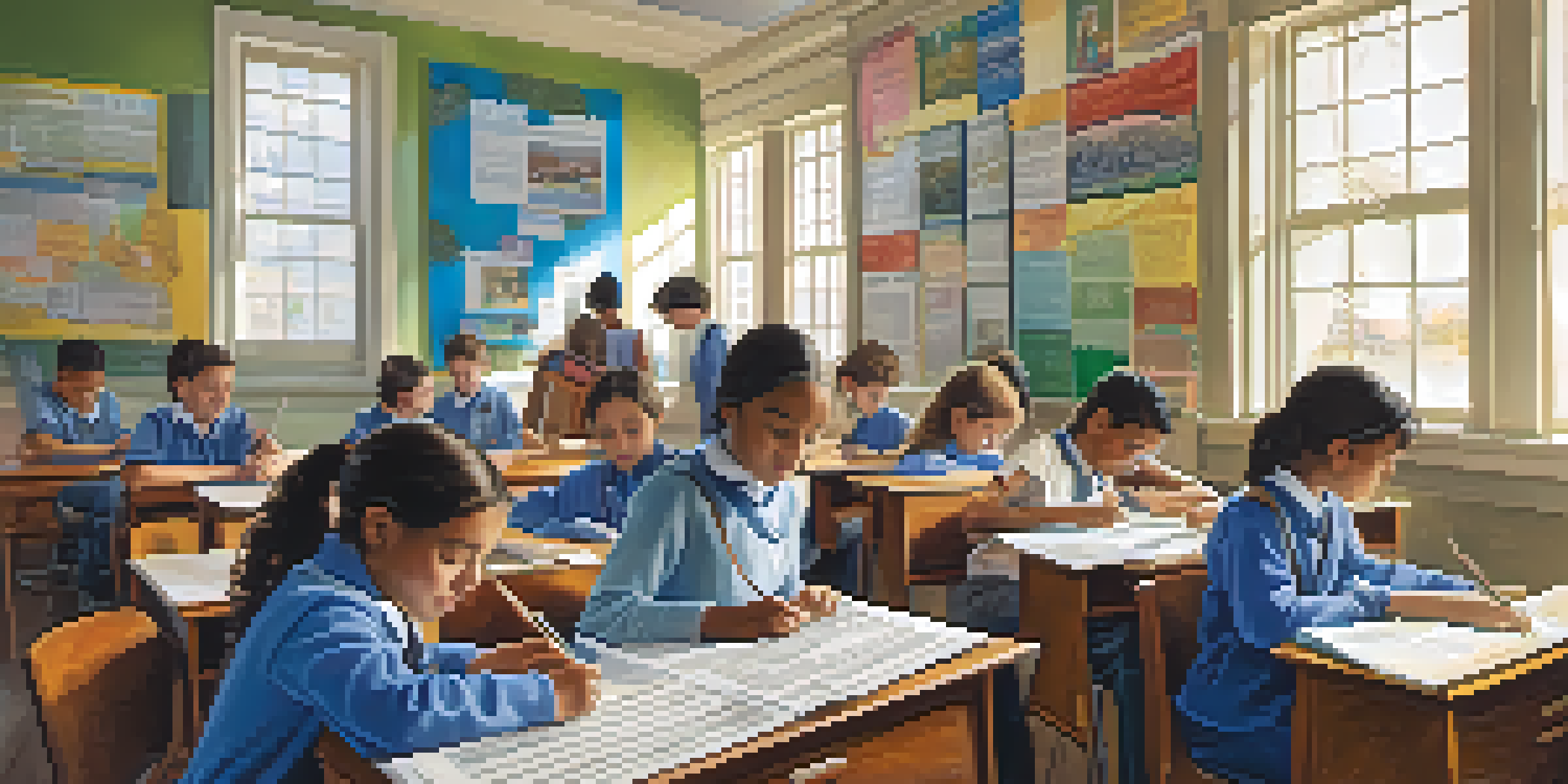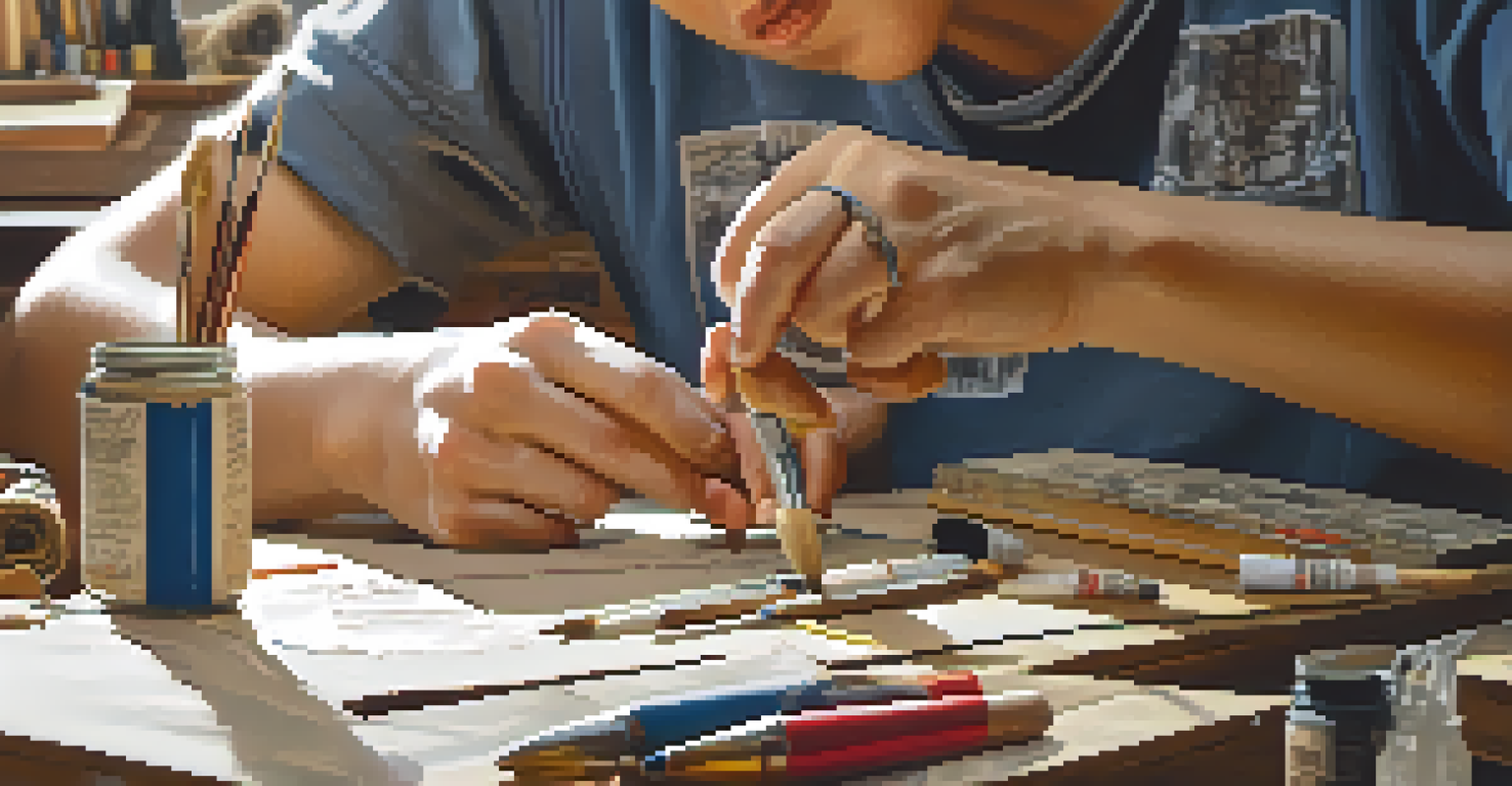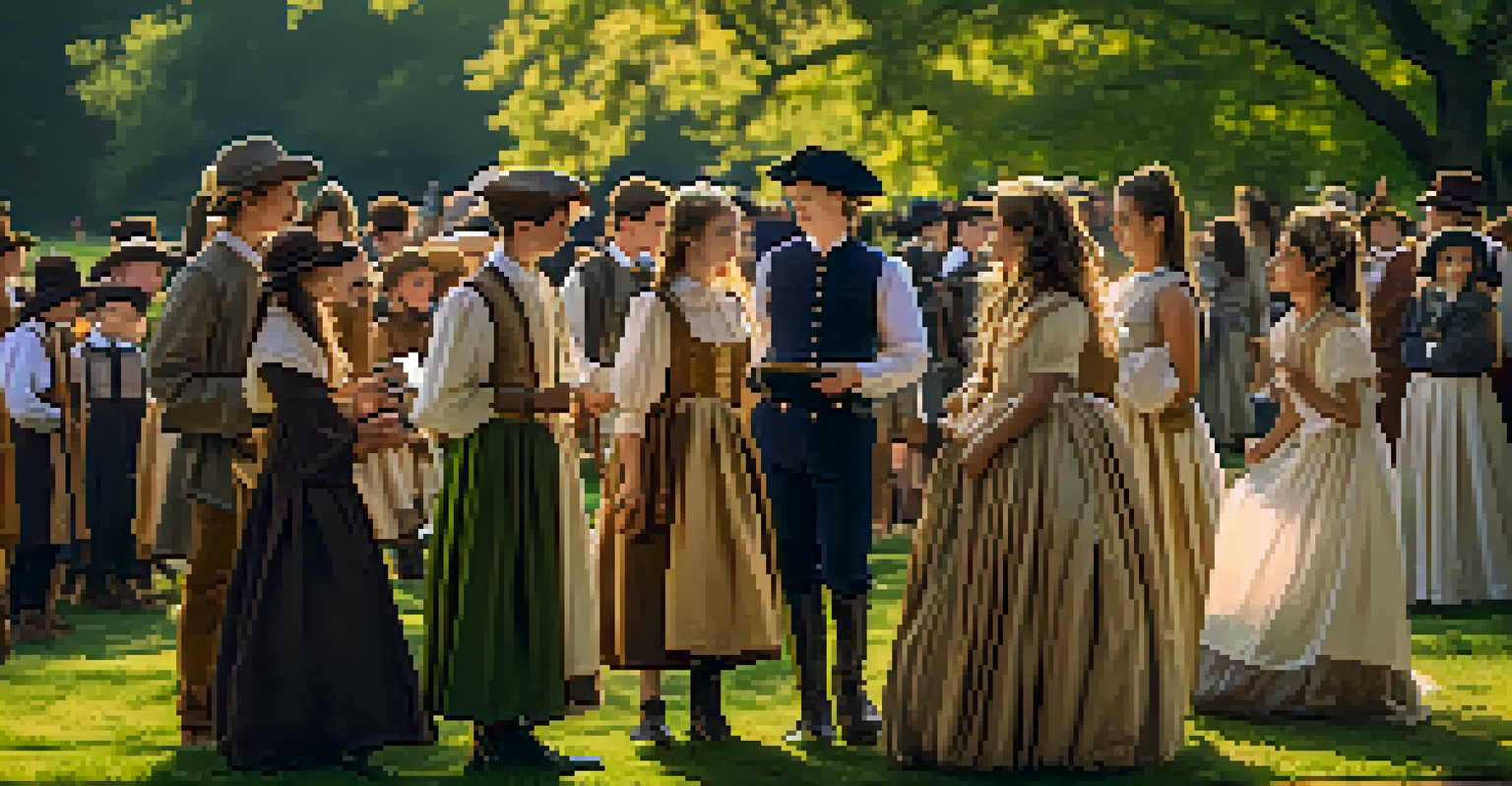Applying Project-Based Learning to Historical Studies

Understanding Project-Based Learning in Education
Project-Based Learning (PBL) is an instructional approach that encourages students to learn through engaging projects. Unlike traditional methods, where memorization is key, PBL emphasizes critical thinking and problem-solving. Students dive into real-world challenges, which can make learning more relevant and enjoyable.
Tell me and I forget, teach me and I remember, involve me and I learn.
In the context of historical studies, PBL allows students to explore history in a way that feels alive and dynamic. Instead of simply reading about events, they might create a documentary or reenact a significant moment in time. This hands-on experience can lead to deeper understanding and retention of historical facts.
Moreover, PBL fosters collaboration among students, as they often work in teams to complete projects. This teamwork not only mirrors real-world scenarios but also helps develop communication skills that are crucial in any field. By working together, students can share diverse perspectives, enriching their understanding of history.
Benefits of Applying PBL to Historical Studies
Applying PBL to historical studies offers numerous benefits, primarily enhancing student engagement. When learners actively participate in crafting their understanding of history, their interest naturally increases. Engaged students are more likely to retain information and develop a love for the subject matter.

Another significant advantage is the development of critical thinking skills. As students analyze historical events and their impacts, they learn to evaluate sources, debate interpretations, and form evidence-based conclusions. This skill set is essential, not just in history, but in navigating today's complex world.
Engagement through Hands-On Projects
Project-Based Learning (PBL) enhances student engagement by allowing them to actively participate in their learning through real-world projects.
Additionally, PBL provides an opportunity for creativity in learning. Students can express their understanding through various mediums, whether it's building a historical model, creating a website, or staging a debate. This creative freedom can ignite a passion for history that traditional methods may not inspire.
Designing Effective PBL Projects in History
To design effective PBL projects in history, educators need to start with clear learning objectives. It's important to determine what historical concepts or skills students should master by the end of the project. This clarity helps guide the project’s scope and ensures that students remain focused on key learning outcomes.
The more that you read, the more things you will know. The more that you learn, the more places you'll go.
Next, consider the relevance and realism of the project. Projects should connect historical themes to contemporary issues or student interests, making the learning experience more meaningful. For instance, investigating the impact of a historical event on today's society can spark enthusiasm and curiosity.
Lastly, providing students with autonomy in their projects can significantly enhance their investment in the learning process. Allowing them to choose topics or formats gives them ownership over their education. This empowerment can lead to more passionate and deeper explorations of historical subjects.
Examples of PBL Projects in Historical Contexts
One engaging project idea is to have students create a historical newspaper. This involves researching a specific time period, writing articles, and even designing ads that reflect the era. Students not only learn about historical events but also develop writing and design skills, making history feel relevant and vibrant.
Another example is the 'Living History' project, where students take on roles from a particular historical period and reenact significant events. This immersive experience allows students to step into the shoes of historical figures, promoting empathy and a deeper understanding of historical context. Such projects can be both fun and educational.
Critical Thinking and Creativity Boost
PBL fosters critical thinking and creativity as students analyze historical events and express their understanding through diverse mediums.
Lastly, students could create a digital timeline that highlights key events and figures. This project encourages research, organization, and technology skills while allowing students to visualize the relationships between different historical events. It’s a great way to combine history with modern digital literacy.
Assessing Student Learning in PBL
Assessing learning in a PBL environment can differ from traditional testing methods. Instead of solely relying on exams, educators can use rubrics that evaluate the process and final product of the project. This approach allows for a more comprehensive understanding of a student’s capabilities and learning progress.
Peer evaluations can also play a key role in assessment. Allowing students to give and receive feedback fosters a collaborative learning environment, where they learn from each other's perspectives. This not only enhances critical thinking but also encourages communication skills.
Additionally, self-reflection is crucial in PBL. Students should have opportunities to reflect on their learning journey, discussing what they learned, what challenges they faced, and how they overcame them. This reflection not only reinforces learning but also promotes a growth mindset.
Challenges of Implementing PBL in Historical Studies
While PBL has many advantages, there are challenges in its implementation, particularly in historical studies. One significant hurdle is the time commitment required for projects. Educators often feel pressed for time with curriculum demands, which can make it difficult to integrate extensive projects.
Another challenge is ensuring that all students are engaged and contributing equally. In group settings, some students may dominate the project, while others may take a back seat. Teachers need strategies to encourage equal participation, ensuring that everyone has a voice in the learning process.
Collaboration and Shared Learning
Teamwork in PBL encourages collaboration, helping students develop essential communication skills while gaining diverse perspectives on history.
Finally, access to resources can be a limiting factor. Some students may struggle to find adequate materials or tools for their projects, especially if they are researching less well-known historical events. Educators must be prepared to provide support and resources to level the playing field.
Future of PBL in Historical Education
The future of PBL in historical education looks promising, with increasing recognition of its benefits. As educators continue to innovate and adapt, we can expect to see more diverse and inclusive projects that reflect a broader range of historical perspectives. This evolution will enrich students' understanding of history and its impact on our world.
With advancements in technology, the possibilities for PBL are expanding. Online resources and tools allow students to collaborate with peers from different regions or even countries, offering a global perspective on history. This connectivity can enhance projects, making them more relevant to today's interconnected world.

Ultimately, embracing PBL in historical studies can help cultivate a generation of critical thinkers, creators, and engaged citizens. By making history come alive through projects, students can develop a lasting appreciation for the subject and its significance in shaping our present and future.